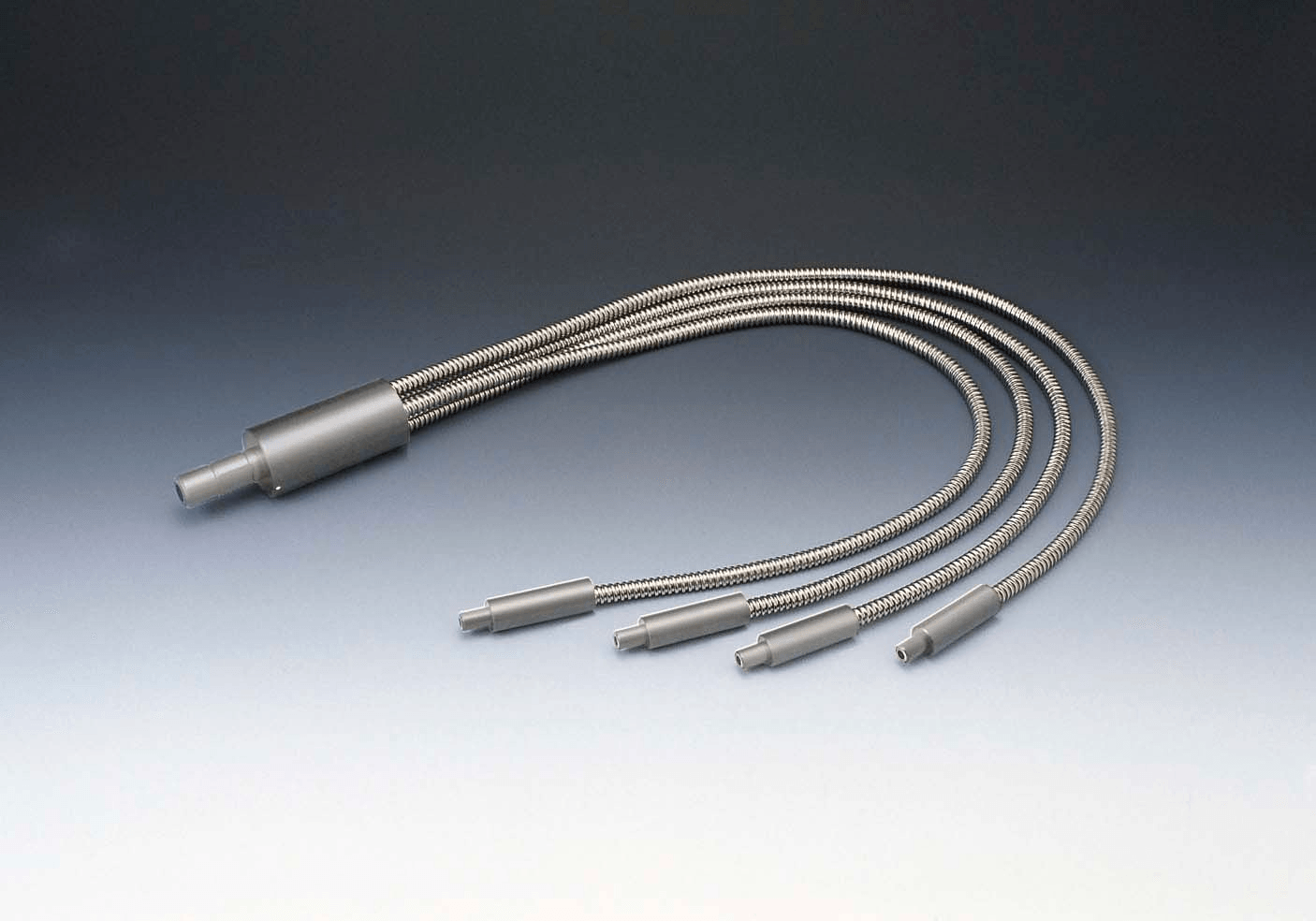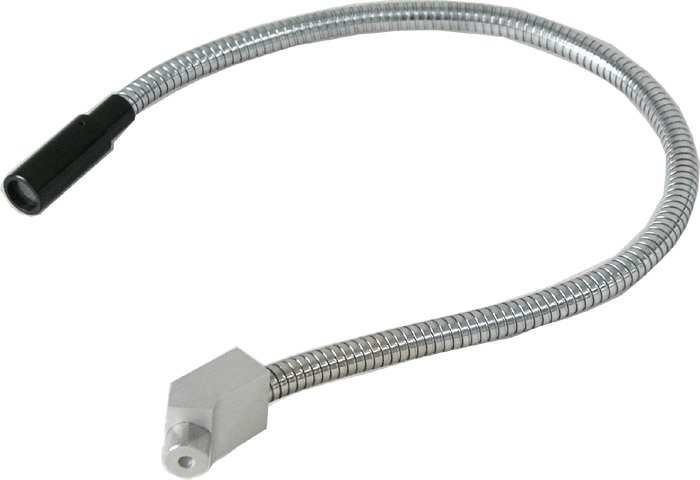Light Guides Information
Image Credit: Direct Industry | Howard Electronic Instruments, Inc.
Light guides conduct the flow of light from a light source to a point of use. They are used to illuminate areas that are too small or too hazardous to permit the installation of a light bulb. Light guides are sometimes called light pipes (lightpipes). Light guides are also used in heat transfer and ultraviolet light (UV) curing applications.
Video Credit: Edmund Optics / CC BY-SA 4.0
Types of Light Guides
There are three basic types of light guides:
- Liquid - Liquid light guides have a flexible outer sheath and a light-conducting liquid core. They are sealed with quartz windows that can be made transparent to a range of wavelengths.
- Fiber optic - A fiber optic light guide consists of a non-coherent bundle of optical fibers. The fibers at each end of the bundle are tightly compressed, cut perpendicular to the axis of the fibers, and polished to permi
 t light to pass into and out of the bundle.
t light to pass into and out of the bundle. - LED - An LED light guide is used to guide light from light emitting diodes (LEDs) to a specific location. LED light pipes come in multiple colors, and are often used to connect panel indicators to their LED light source.
Fiber optic light guides are less flexible than liquid light guides, but are well-suited for the transmission of light in the visible and near-infrared range. Liquid light guides have little luminous loss over distance and are better suited for the transmission of UV light. Most liquid and fiber optic light pipes are rigid and straight or rigid and bent, although there are specific flexible light pipes available.
Specifications
Selecting a light guide requires an analysis of physical and performance specifications which include:
-
Length
-
Diameter
-
Wavelength
-
Termination method - Some light guides are terminated with a threaded or unthreaded ferrule, a tube-like mechanical fixture that confines the stripped end of a fiber bundle. Others are unterminated devices.
- Acceptance angle - The maximum angle measured from the axis within which light is accepted o
 r emitted by the light guide and transmitted along its length.
r emitted by the light guide and transmitted along its length. -
Bend radius - The smallest bend that fibers can withstand before fracture.
-
Numerical aperture - A calculated, optical value that indicates a device's ability to collect light over a range of input angles. It is equal to the sine of the acceptance angle. For fiber optic light guides, numerical aperture depends upon the core and cladding indexes of refraction. Multi-leg devices are split along the length of the light guide so that the ends of the fibers extend separately to illuminate different points from a single light source.
Materials of Construction
Light guides differ in terms of core materials and sheathing types. Common core materials include:
-
Glass
-
Silica
-
Quartz
-
Plastic
-
Zirconium fluoride fibers - Offer a good combination of transmittance properties, environmental stability, and mechanical quality.
-
Chalcogenide fibers - Do not have the tensile strength of silica fibers, but can be epoxied into connectors or suitably polished.
Sheathing, which is the protective jacket around the light guide, is available in a number of different material configurations including:
- Fluorocarbon rubber
- Polyvinyl chloride (PVC)
- Stainless steel
- Silicone
- Polytetrafluoroethylene (PTFE)
- Acrylic
Standards
DIN 58143-2 - DATA SHEET SPECIFICATION OF FIBER OPTIC PRODUCTS - PART 2: FLEXIBLE LIGHT GUIDES
DIN 58141-3 - MEASUREMENT OF FIBER OPTIC ELEMENTS - PART 3: DETERMINATION OF ACCEPTANCE ANGLE OF LIGHT GUIDES
Image credits:
Direct Industry | Howard Electronic Instruments, Inc.
- liquid light guides
- conical light pipe
- high temperature light pipe
- IR light guides
- liquid light pipe
- optical light pipe
- projector light pipe
- right angle light pipe
- tapered light guide
- UV light pipe
- 2mm LED light pipe
- 3mm light pipe
- 5mm LED light pipe
- bifurcated liquid light guides
- cast acrylic light pipe
- fiber optic ring light guides
- flexible LED light guides
- flexible plastic light guides
- hollow light pipe
- IR fiber optic light pipe
- plastic optical fiber light guides
- quartz light pipe
- surface mount LED light pipe
- tapered light pipe
